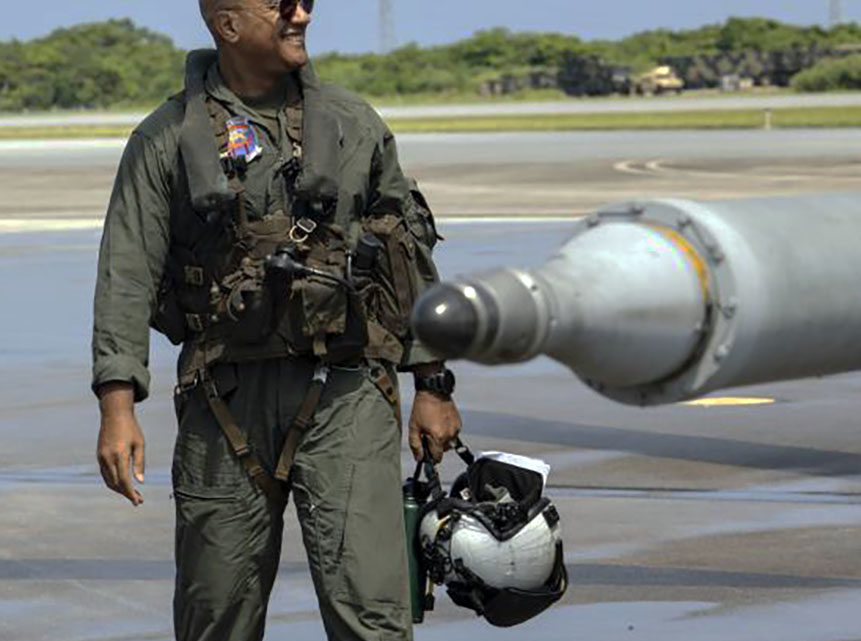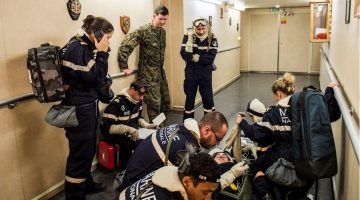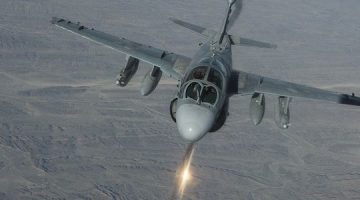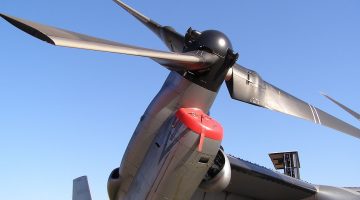By Robbin Laird –An Interview With Lt. Gen. Brian Cavanaugh, Commanding General, Fleet Marine Force, Atlantic; Commander, Marine Forces Command; and Commander, Marine Forces Northern Command*
As Lt. Gen. Cavanaugh has spent many years in the Pacific, he comes to the Atlantic area in a period of change and under the impact of the war in Ukraine. He argued that the Marines are in a process of transformation which can be understood as one affecting all of the joint forces. As he put it: “The joint forces have acquired their equipment and training in the past twenty hears focused on a capability, not necessarily specific threats. This clearly has changed as we recognize specific threats to which we need to modernize equipment and train our forces.”
“The joint forces have acquired their equipment and training in the past twenty years focused on a capability, not necessarily a specific threat. This clearly has changed as we recognize specific threats to which we need to modernize equipment and train our forces.”
The updated National Defense Strategy and National Security Strategy undoubtedly identify the primary threat from the People’s Republic of China and the CCP. The Corps has taken this task head on as evident in the Commandant’s Planning Guidance and the past few years of Force Design. However, from his seat on the Atlantic coast, where his headquarters sits abreast the Navy’s U.S. Fleet Forces Command, Cavanaugh explains the Corps’ support to National Defense is more than just a focus on the Pacific.
“We know the PRC is operating globally and competes with the U.S. and our allies across all domains. The Corps, and the greater Naval force, is looking at how we address security issues globally,” said Cavanaugh. His command is co-located with U.S. Fleet Forces Command, and he works closely with this command to support the Marine Corps’ Naval Integration efforts. Cavanaugh emphasized that they are working together to meet the evolving threat envelope facing U.S. and allied forces.
The Marines are the smallest of the joint forces but are very adaptable. Cavanaugh is focused on transitioning advanced Marine Corps capabilities and joint concepts to enable the Navy and the joint force to meet these emerging challenges across all global regions.
He argued that the current command structures along geographical lines need to adapt as technology and our Nation’s threats do not subscribe to those geographical boundaries. The Marines are working to re-shape and re-define how they tailor their forces to work the defense problems posed by the newly evolving threat envelopes.
Cavanaugh explained that concepts like Expeditionary Advanced Base Operations and Littoral Operations in a Contested Environment address global security threats in support of Fleets and Combatant Commands. “We are focused on shaping different ways to use our tools to adapt various force packages to get the desired joint effect. In my discussions with fleet commanders, I focus on our complimentary capabilities. Marines can provide fires and sustainment in the broader Naval campaign.
“The Corps provides commanders across the globe with expeditionary, joint force enabling capabilities. Our air, land, and sea capabilities facilitate integration with our fellow services and allies. That’s why we train and equip to enable the operations of the broader Joint Force, our allies and partners, and the NATO construct.”
*This is an abstract of a broader interview published on March 8th, 2023 on our partner’s website SLDinfo.com and re-published here with its authorization >>> https://sldinfo.com/2023/03/the-marine-corps-works-its-way-ahead-the-perspective-of-lt-gen-brian-cavanaugh/
Photo: U.S. Marine Corps Maj. Gen. Brian W. Cavanaugh’s final flight as the commanding general of 1st Marine Aircraft Wing (MAW) © Cpl. Dalton Payne, 1st Marine Aircraft Wing, Okinawa, Japan, July 2022












